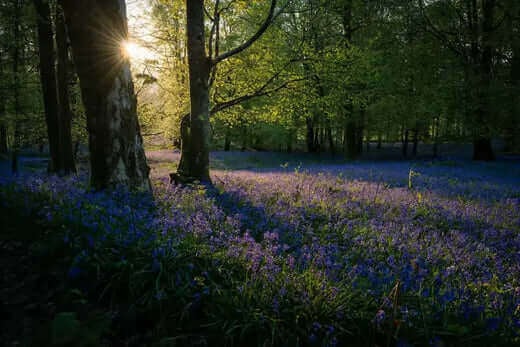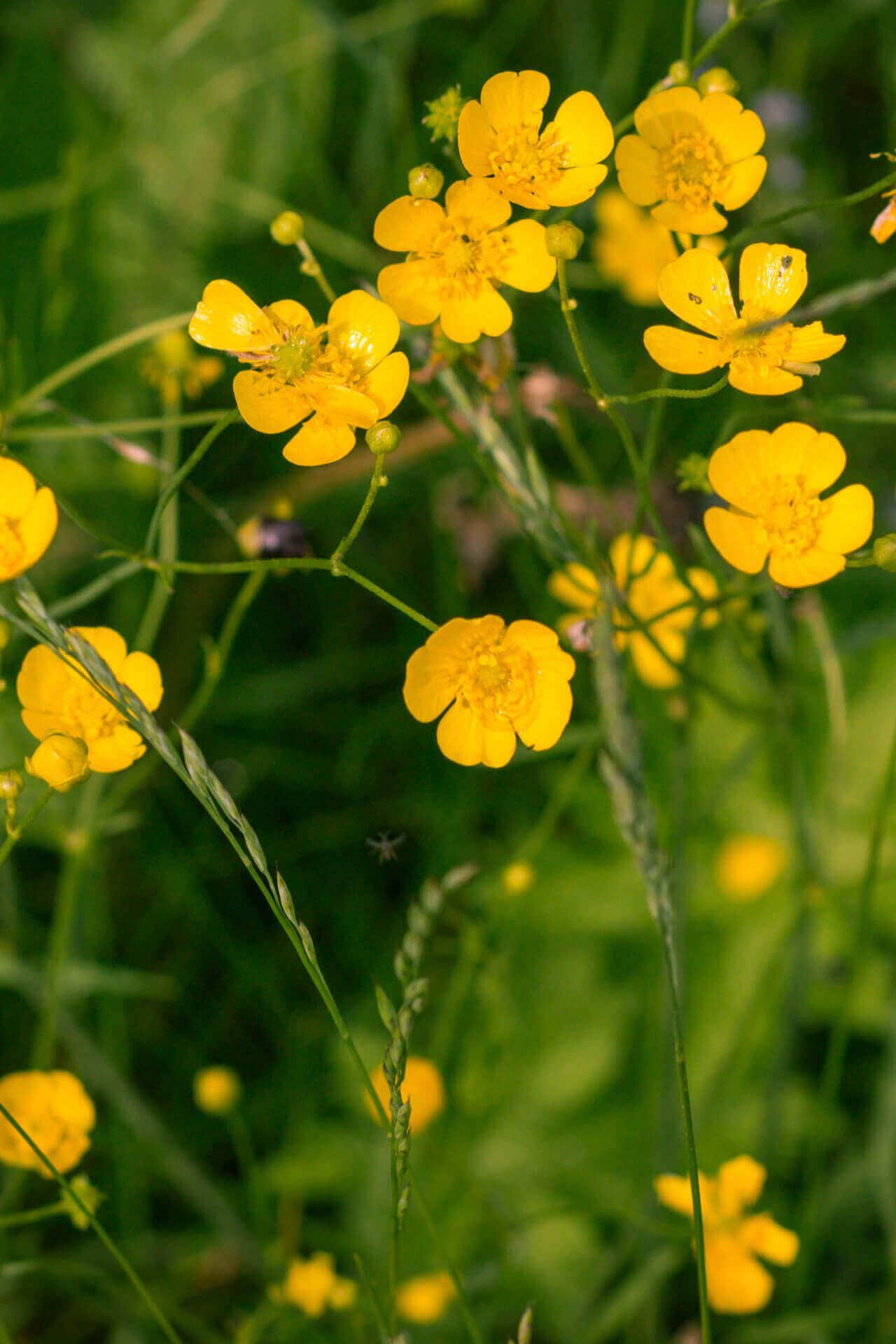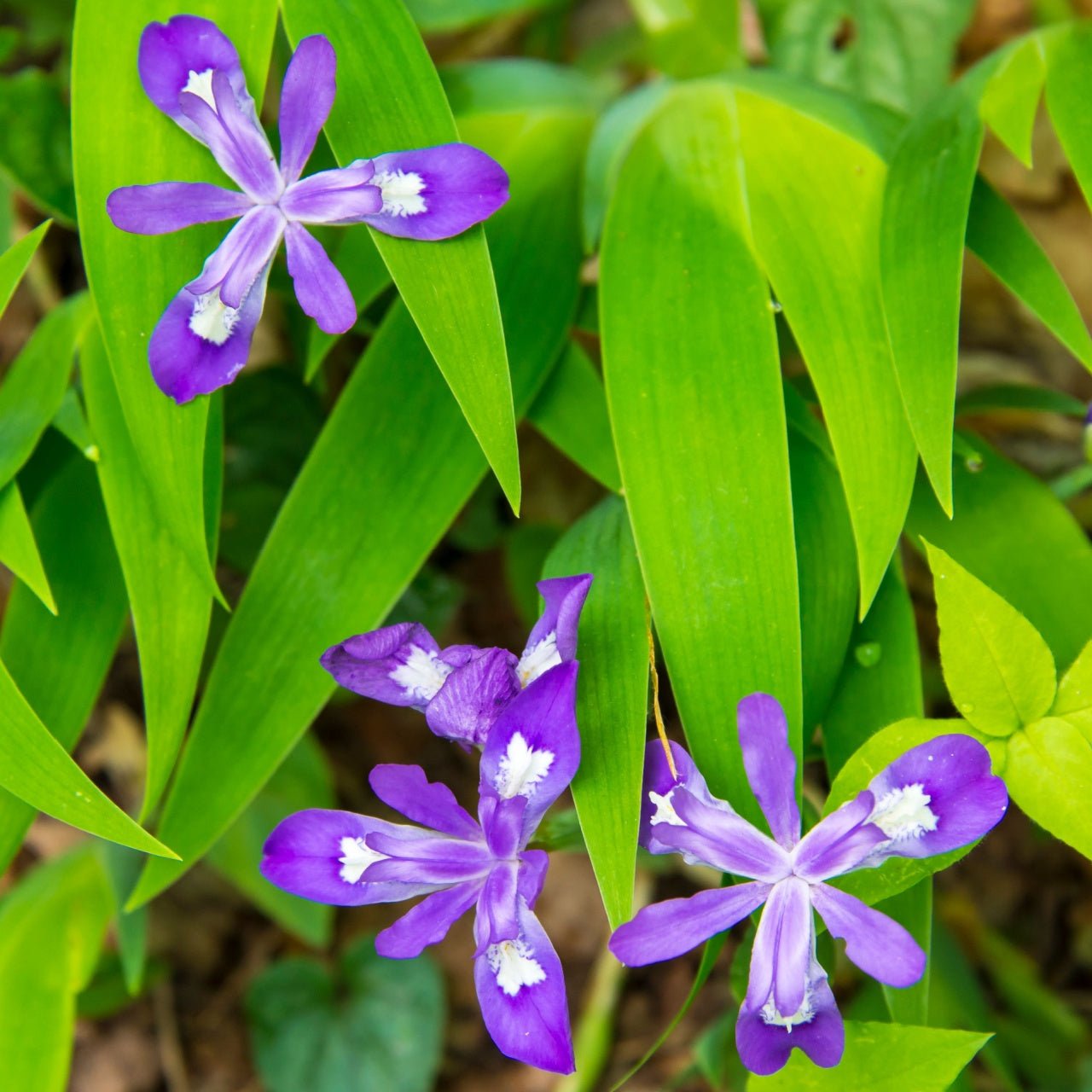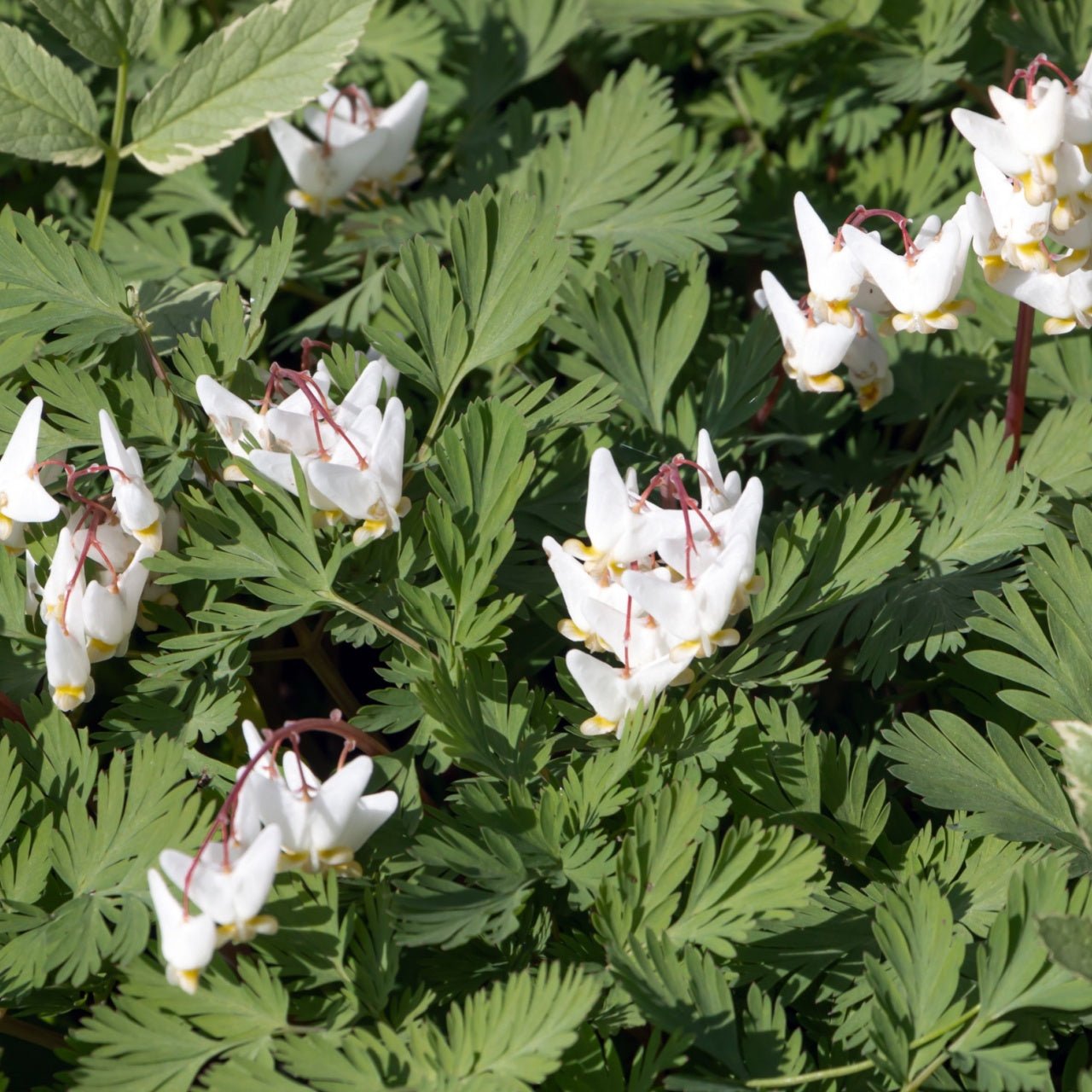What is the difference between full sun and full shade?
Full sun in a garden means that the area has sun for the greater majority of the day. Full sun spots are likely to be south-facing.
Full shade in a garden means that the area does not receive sunlight for all or the majority of the day. These spots in the garden may be blocked by buildings or trees and shrubs. Full-shade spots are most often north-facing.
What is the difference between part sun and part shade?
This is where things get a little dicey. I know what you may be thinking: part sun and part shade, aren't they the same thing? To be honest, they are very similar.
Part sun means a plant should receive around 4-6 hours of sun a day. Part shade means that a plant should receive around 4-6 hours of shade a day. Many plants do best in this range.
What kinds of gardens have shade?
Most gardens have shade in one form or another. Whether it be from tall trees, buildings, or other tall plants, shade is a part of almost every garden.
Some gardens are designed to be heavily shaded. The prime examples of this are woodland gardens.
Woodland gardens are exactly what they sound like gardens made in woodlands. Because of such heavy tree cover, woodland gardens are mostly shaded. They create a unique challenge for a gardener but can result in breathtaking and magical outcomes.
Can I grow anything in the shade?
No, not everything can be grown in the shade. But there are hundreds of shade-loving plants that can thrive in the least sunny conditions. Though they can sometimes be tricky to find, there are countless plant options for shade gardens.
Can I have a beautiful garden even though it has full shade?
You can have a beautiful garden even if it's shaded. Just because your space lacks sun doesn't mean you have to sacrifice beauty and appeal. Many gorgeous plants grow exclusively in the shade and can transform your outdoor space into something wonderful for you to enjoy.
What can I plant in part shade?
Many plants can tolerate partial sun but prefer shade. Here is a list of 6 shade tolerant perennials:
Bird’s Foot Violet
The bird's foot violet is a shade-tolerant perennial that grows low to the ground. It can make an excellent container plant and is easy to grow. This low-maintenance perennial is a must-have for any violet enthusiast with a shaded garden.
Zones: 4 to 8
Sun exposure: Full sun or part shade
Mature height: up to 6 inches
Water: average
Best for woodland edges, in front of borders and containers
Bluets
Bluets are delicate plants that thrive with moderate amounts of sun. This shade-tolerant perennial has many tiny, blue flowers that bloom for a long period. This plant looks great in containers and gardens alike.
Zones: 3 to 8
Sun exposure: Part sun to part shade
Mature height: up to 6 inches
Water: Dry to average
Best for from of borders, woodland gardens, edges, and containers
Creeping Buttercup
The creeping buttercup is a nostalgic shade-tolerant perennial. In addition to being ideal for woodland gardens, this plant can add brightness in shaded settings. Creeping buttercup is a lovely, yet sturdy plant that's low (and oftentimes no) maintenance.
Zones: 3 to 9
Sun exposure: Full sun or part shade
Mature height: up to 10 inches
Water: Average
Best for woodlands, borders, or as a groundcover
Dwarf Crested Iris
The Dwarf crested iris is a shade-tolerant perennial that brings an otherworldly element to shaded gardens. Its distinct blooms stand out against dark green foliage making any passerby want to stop and take a look.
Zones: 3 to 9
Sun exposure: Full sun to part shade
Mature height: up to 10 inches
Water: Average
Best for woodlands, borders, and containers
Dutchman's Breeches
Dutchman's breeches have the most unusual flowers and have been likened to a colonial Dutchman's breeches. They grow well in part shade and can tolerate a range of soil types. Plus, they are easy to grow.
Zones: 3 to 7
Sun exposure: Full sun or part shade
Mature height: up to 12 inches
Water: Average to moist
Best for woodland gardens, borders, and containers
Great White Trillium
Great white trillium is a flower with uncommon blooms. They thrive in shaded conditions and are low-maintenance. In addition to attracting beneficial insects, this shade-tolerant perennial fits many different garden styles.
Zones: 3 to 9
Sun exposure: Full sun or part shade
Mature height: in ideal conditions, up to 2 feet
Water: average
Best for woodland gardens, shade gardens, containers, and borders
What can I plant in full shade?
Many plants thrive with virtually no sunlight at all. They have adapted to low-light conditions and will wilt in the full sun.
Without further ado, here is a list of 7 shade tolerant perennials:
Black Cohosh
Black cohosh is a shade-tolerant perennial that is most often grown in the backs of borders due to its height. It can bring an aura of mystery to a woodland garden by serving as a screen. It is easy to grow and low maintenance.
Zones: 4 to 9
Sun exposure: Full shade
Mature height: up to 6 feet
Water: Average
Best for woodland gardens and shaded gardens
Foam Flower
Foam flower is a shade-tolerant perennial that thrives in complete shade. It is grown in woodland gardens and is admired for its fuzzy bristle-like flowers.
Zones: 3 to 8
Sun exposure: Full shade
Mature height: up to 2 feet
Water: Average
Best for the middle of borders, woodland gardens, and shaded gardens
Jacob’s ladder
This shade-tolerant perennial does best in the shadiest spots of the garden. Growers of Jacob's ladder will be rewarded with beautiful purple blossoms. Their blooms are great at brightening up darkened areas of the garden.
Zones: 3 to 8
Sun exposure: Full shade
Mature height: up to 3 feet
Water: Average to moist
Best for woodland gardens and alpine gardens
Mayapple
Mayapple is a shade-tolerant perennial that has unusual umbrella-like foliage. Best of all, its flowers peek out from under the foliage. It can be fun for children to hunch down and try to spot its elusive blooms.
Zones: 3 to 8
Sun exposure: Full shade
Mature height: 1½-2 inch long
Water: Average to moist
Best for woodland gardens, shaded gardens, and alpine gardens
Painted Trillium
The painted trillium is a sweet, delicate shade tolerant perennial with blooms that look like they have been painted. Small, but mighty, this perennial thrives in full shade and is easy to grow.
Zones: 3 to 9
Sun exposure: Full shade
Mature height: up to 8 inches
Water: Average
Best for woodland gardens, alpine gardens, containers, and shaded borders
Twinleaf
This shade-tolerant perennial is almost too good to be true. Twinleaf forms mounds of foliage from which flowers bloom. Its tiny, white flowers will bring a light and airy vibe to any woodland garden.
Zones: 5 to 7
Sun exposure: Full shade
Mature height: up to 8 inches
Water: Average to moist
Best for woodland gardens, front of borders, edges, and containers
Virginia Bluebells
Virginia bluebells are one of the most beautiful shade-tolerant perennials on this list. Their true blue blooms thrive in full shade making them the perfect fit for a shady spot in a cottage garden. Plus, pollinators love them.
Zones: 3 to 8
Sun exposure: Full shade
Water: Average to moist
Mature height: 18-24 inches
Best for cottage gardens and borders
How to Build a Bed for Shade-Tolerant Perennials
Creating a specific garden bed for shade-tolerant perennials allows you to utilize darker landscape areas effectively. With thoughtful planning, shade-tolerant perennials can offer vibrant foliage, interesting textures, and unexpected color highlights. This step-by-step guide will show you how to build a successful low-maintenance bed that fulfills the requirements of these remarkable plants.
Begin by selecting the location for your new perennial bed. Assess the duration of sunlight exposure the area receives during daylight hours. Plants that thrive in the shade need minimal morning or late afternoon sun exposure yet continue to demand indirect sunlight to survive. Take the time to walk through your yard or garden to find areas where tree canopies or tall shrubs create patterns of dappled sunlight. Identifying these areas of soft sunlight will ensure your perennial plants thrive.
Begin by removing all debris from your chosen area, including weeds, grass, and invasive plants. Clearing away existing plants minimizes competition and provides a fresh start. You can employ various methods: Remove weeds using your hands or a gardening fork for tough roots while smothering unwanted growth with cardboard or thick newspaper. Manual techniques and organic solutions should be prioritized over chemical weed control to protect beneficial soil organisms and minimize toxic residue buildup.
After completing the clearing process, turn your attention to soil preparation. Loamy soil that drains well and contains moderate amounts of organic matter creates ideal growing conditions for shade-tolerant perennial plants. Loosen the top layer of soil with a tiller or another garden tool, which facilitates root establishment. Mix compost or manure thoroughly into the soil to enhance nutrient levels and texture. A successful perennial bed depends on healthy soil, so make sure it balances moisture retention with proper aeration.
After preparing the soil, you should focus on organizing the arrangement of your plants. Plants in shade categories experience different light conditions, so grouping those that need similar moisture and light conditions is essential. Position perennials that need regularly moist soil near water sources, but place drought-resistant varieties toward the outer edges of your bed. Plan your garden layout with mature plant heights to prevent taller plants from blocking sunlight for shorter specimens. Position taller plants at the rear of your garden bed and progressively arrange medium and low-growing plants towards the front to maintain visibility and balance.
Once you complete your plant arrangement, excavate planting holes that exceed the size of each root ball. Place each perennial carefully in its hole and fill around it with the prepared soil. Press the soil down carefully around the roots to eliminate air pockets without making it too compressed. Complete the installation process by giving all plants a comprehensive watering session to help them settle. You must consistently check moisture levels based on your climate conditions, shading, factors from structures or trees, and soil type to prevent your new perennials from drying out.
Complete your planting by applying mulch, which protects soil temperature stability and helps retain moisture. Shredded leaves and bark or straw function as insulation for root zones while inhibiting weed growth. Typically, a two—to three-inch mulch layer meets requirements. Once mulch covers the bed and plants are established; regular maintenance requires watering at intervals, intermittent use of organic fertilizer, and continuous weeding. Remove dead flowers and foliage to maintain a neat garden that will allow your shade-loving perennials to thrive long-term.
Read more

So do perennials come back every year? The short answer is yes; perennials do come back every year. However, there are some factors that can affect a plant's status as annual or perennial. This art...
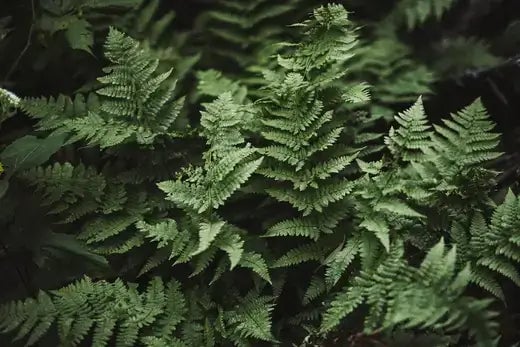
This article has everything you need to know about bracken ferns. From their growing habits to ideal planting conditions, this article aims to answer your fern-related questions. Whether you are an...


